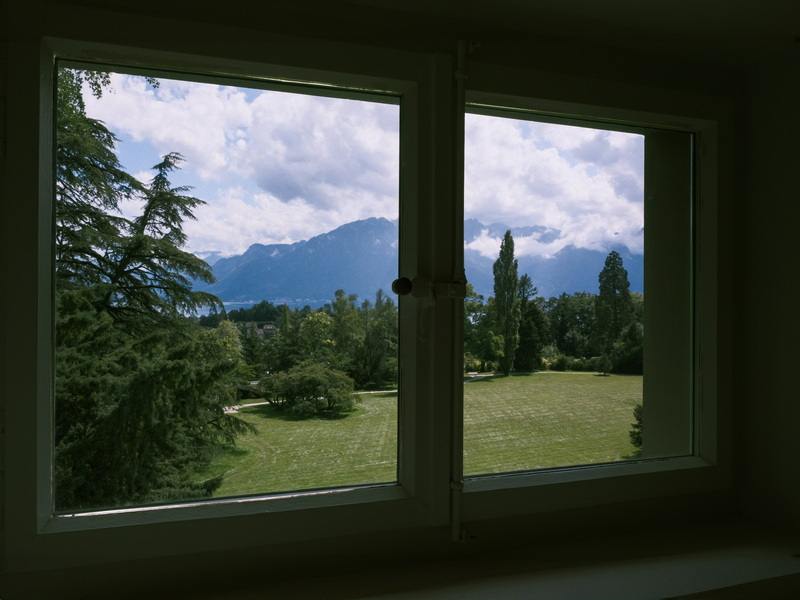English 




Views: 222 Author: Astin Publish Time: 2025-02-24 Origin: Site



Content Menu
● Introduction to Aluminum Window Installation
>> Checking and Preparing the Window
● Common Challenges and Solutions
>> Choosing the Right Fasteners
● Additional Tips for a Successful Installation
>> Inspecting the Window Frame
>> Maintenance
>> 1. What tools are necessary for installing aluminum windows?
>> 2. How do I ensure the window is level and plumb?
>> 3. What type of sealant should I use for aluminum windows?
>> 4. Can I install aluminum windows by myself?
>> 5. How do I prevent water leaks around the window?
Installing aluminum window frames is a process that requires careful planning, precise measurements, and attention to detail. Aluminum windows are popular due to their durability, low maintenance, and affordability. Here's a comprehensive guide on how to install aluminum window frames effectively.

Aluminum windows are widely used in both residential and commercial settings because they offer excellent strength-to-weight ratio, corrosion resistance, and aesthetic appeal. The installation process involves several key steps, from preparing the opening to sealing the window. Understanding these steps is crucial for a successful DIY installation.
Before installing the aluminum window, it's essential to prepare the opening. This involves measuring the opening to ensure it matches the window dimensions. The opening should be at least 1 inch wider and taller than the finished window size to accommodate insulation and adjustments. Clean the opening thoroughly, removing any debris or old sealants, and ensure it is dry and smooth. If the opening is not square or has uneven surfaces, you may need to use shims or adjust the frame to fit properly.
Inspect the aluminum window for any damage during shipping. Measure the window to confirm it fits the prepared opening. Place shims along the bottom of the window frame to support it during installation and ensure space for insulation. These shims should be positioned about every 12 inches to maintain even support. Additionally, check the window's hardware, such as hinges and handles, to ensure they are securely attached and functioning properly.
1. Fit the Window: Carefully lift the window and fit it into the opening, ensuring it is centered. Use a level to check that the window is perfectly horizontal and vertical. This step is crucial for ensuring the window operates smoothly and efficiently.
2. Secure the Window: Use appropriate screws or fasteners to secure the window to the frame, but avoid over-tightening to prevent frame distortion. Fasteners should only be applied to the sides of the window, not the top or bottom. Ensure the fasteners are compatible with the type of wall you are installing into, whether it's wood, brick, or concrete.
3. Seal the Window: Apply insulation between the window frame and the opening to enhance energy efficiency. Use silicone sealant around the outside of the window to seal any gaps and prevent water or air infiltration. This step is vital for maintaining the window's thermal performance and preventing moisture buildup.

One of the common challenges during installation is ensuring the window is properly aligned and level. This can be achieved by using a spirit level and adjusting the position of the window with shims if necessary. It's crucial to ensure the window is both level and plumb to prevent operational issues. Misalignment can lead to difficulties in opening and closing the window, as well as increased wear on the hinges.
Selecting the appropriate fasteners is important for securing the window to the frame. The choice of screws, anchors, or bolts depends on the type of wall and frame material. For example, if the frame is wooden, you might use wood screws, while for metal frames, metal screws are more suitable. In masonry walls, consider using anchor bolts to provide a secure hold.
Weatherproofing is a critical step in aluminum window installation. Apply a high-quality sealant around the window edges to prevent water and air leaks. Additionally, using foam insulation tape or backer rod can enhance thermal performance by filling gaps around the window. Regularly inspect the sealant for signs of wear or damage and reapply as needed to maintain the window's efficiency.
Safety should always be a priority during DIY projects. Wear protective gear such as gloves, safety glasses, and earmuffs to prevent injuries. Ensure you have assistance if the window is heavy, and use appropriate tools to avoid accidents. If you are working at heights, use a ladder safely and consider having someone hold it for stability.
Before starting the installation, plan your workflow carefully. Ensure all necessary tools and materials are available to avoid delays. Consider the weather conditions; it's best to install windows on a dry day to ensure the sealant sets properly.
After installation, inspect the window frame for any gaps or imperfections. Check the operation of the window to ensure it opens and closes smoothly. If there are any issues, address them promptly to prevent further problems.
Regular maintenance is key to extending the lifespan of aluminum windows. Clean the windows regularly to remove dirt and debris, and inspect the sealant for signs of wear. Reapply sealant as needed to maintain the window's weatherproofing.
Installing aluminum window frames can be a rewarding DIY project if done correctly. By following the steps outlined above and taking necessary safety precautions, you can ensure a successful installation that enhances the aesthetic and functionality of your home. Remember to consult professionals if you are unsure about any part of the process. Proper installation not only improves energy efficiency but also adds value to your property.

Essential tools include a tape measure, level, drill, screws, hammer, and sealant. Safety gear such as gloves and safety glasses are also important for protecting yourself during the installation process.
Use a bubble or laser level to check that the window is perfectly horizontal and vertical. Adjust its position using shims if necessary to maintain proper alignment.
Silicone sealant is commonly used for sealing gaps around aluminum windows. It provides a durable barrier against water and air infiltration, ensuring energy efficiency and weatherproofing.
While it's possible to install aluminum windows by yourself, having assistance is recommended, especially if the windows are heavy. Additionally, if you're unsure about any part of the process, consider consulting a professional installer.
Apply a high-quality sealant around the window edges and use foam insulation tape or backer rod to fill gaps. Ensure the window is properly aligned and sealed to prevent water leaks.
[1] https://gitportesfenetres.ca/en/resources/how-to-install-aluminum-window/
[2] https://todaydoor.com/installation-guide-and-selection-tips-for-aluminium-windows/
[3] https://gist.github.com/allenfrostline/c6a18277370311e74899424aabb82297
[4] https://www.buco.co.za/catalog/product/view/_ignore_category/1/id/147/s/diy-guide-installing-your-own-aluminium-windows/
[5] https://universaltradesman.com.au/window/how-to-install-aluminium-windows/
[6] https://b3logfile.com/pdf/article/1653485885581.pdf
[7] https://www.wideline.com.au/video/how-to-install-an-aluminium-sliding-window/
[8] https://pdf.lowes.com/productdocuments/d931a510-e693-4e60-969b-46375ac646df/01120388.pdf
[9] https://www.cnblogs.com/nothingbrother/articles/2309741.html
[10] https://www.aiswindows.com/blog/process-to-install-aluminium-windows/
[11] https://www.ezwindows.com.au/how-to-install-an-aluminium-window/
Top Aluminum Furnitures Manufacturers and Suppliers in Austria
Top Aluminum Furnitures Manufacturers and Suppliers in Norway
Top Aluminum Furnitures Manufacturers and Suppliers in Sweden
Top Aluminum Furnitures Manufacturers and Suppliers in Switzerland
Top Aluminum Furnitures Manufacturers and Suppliers in Netherlands
Top Aluminum Furnitures Manufacturers and Suppliers in France
Top Aluminum Furnitures Manufacturers and Suppliers in Spain
Top Aluminum Furnitures Manufacturers and Suppliers in Italy
Top Aluminum Furnitures Manufacturers and Suppliers in Germany
